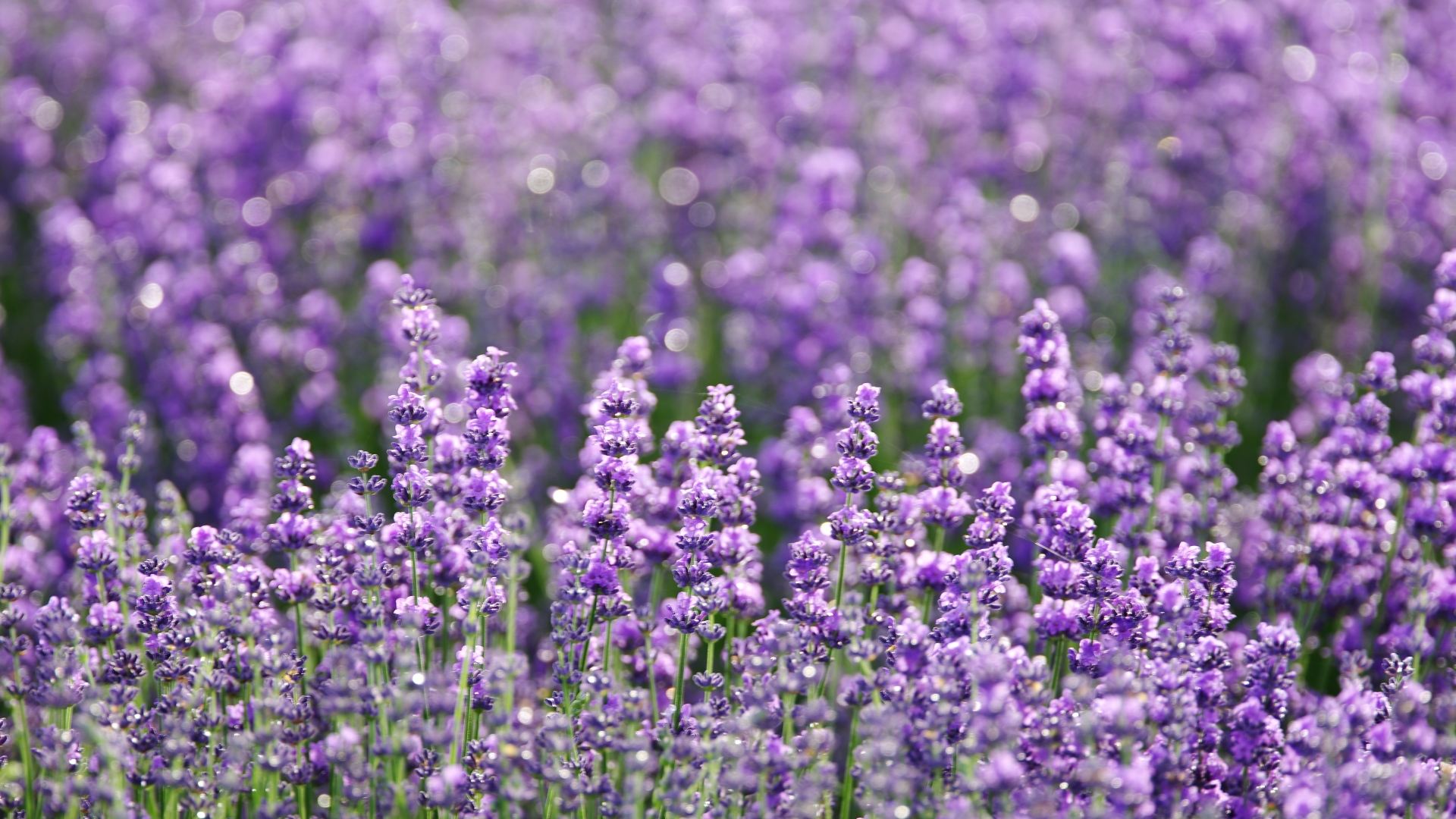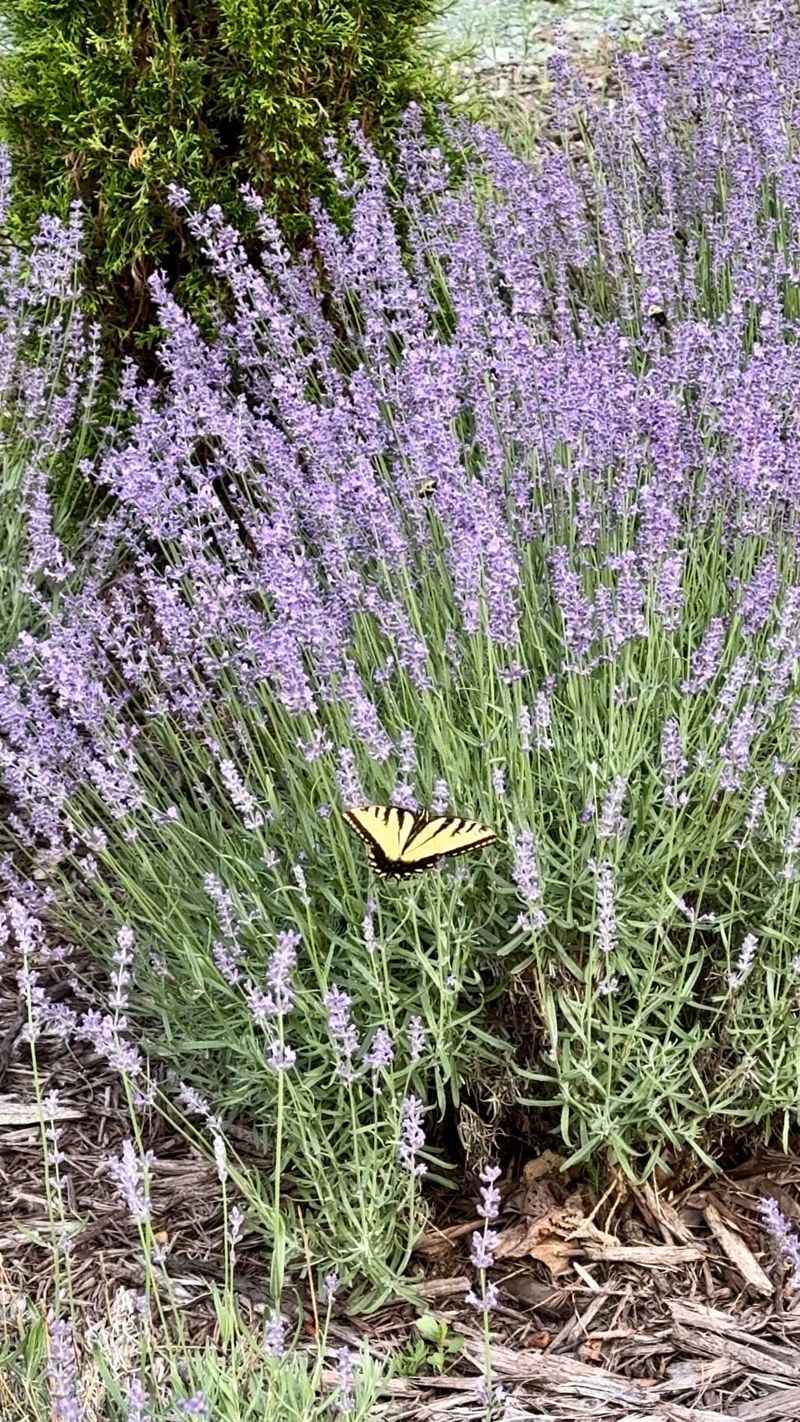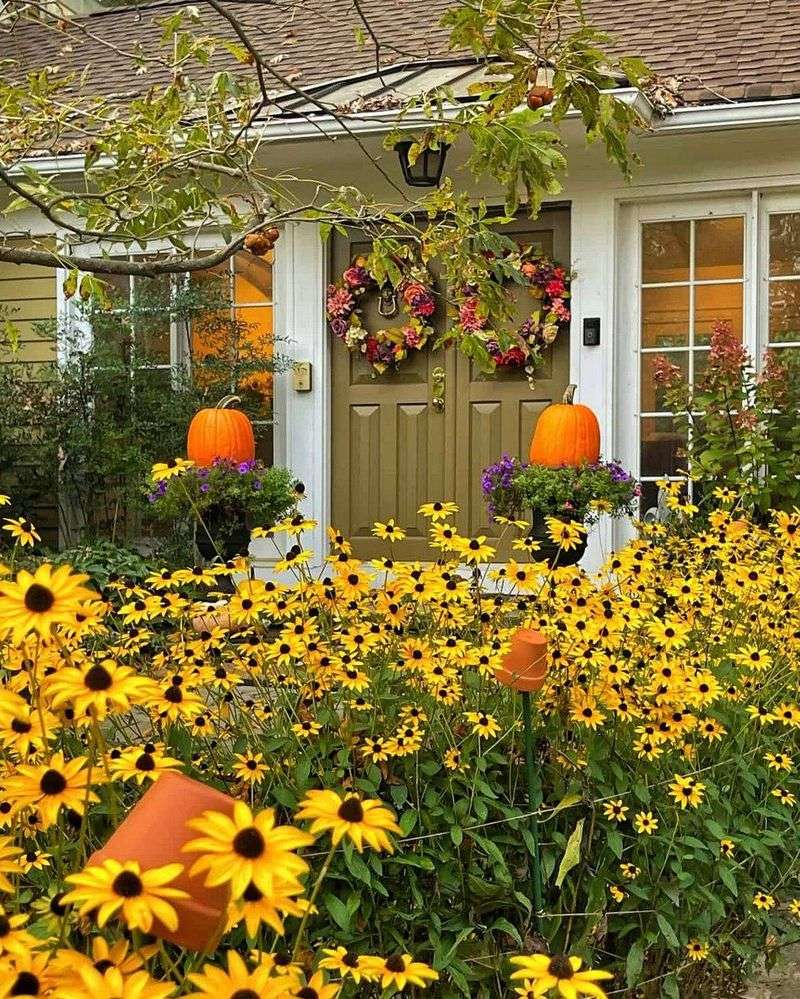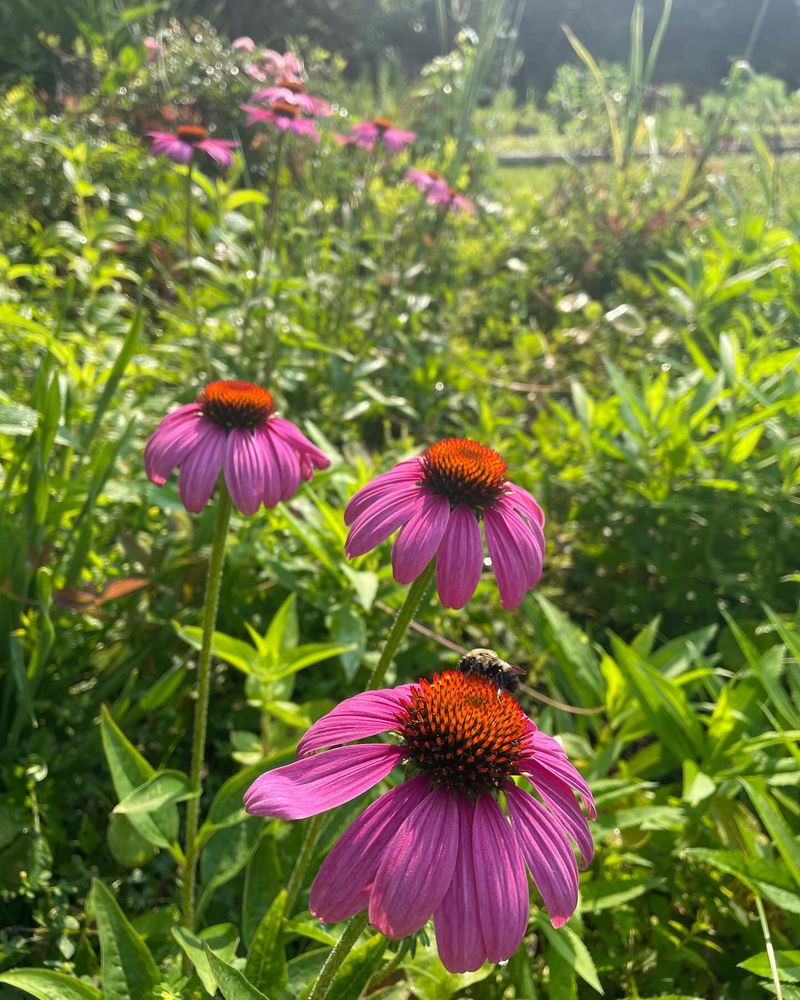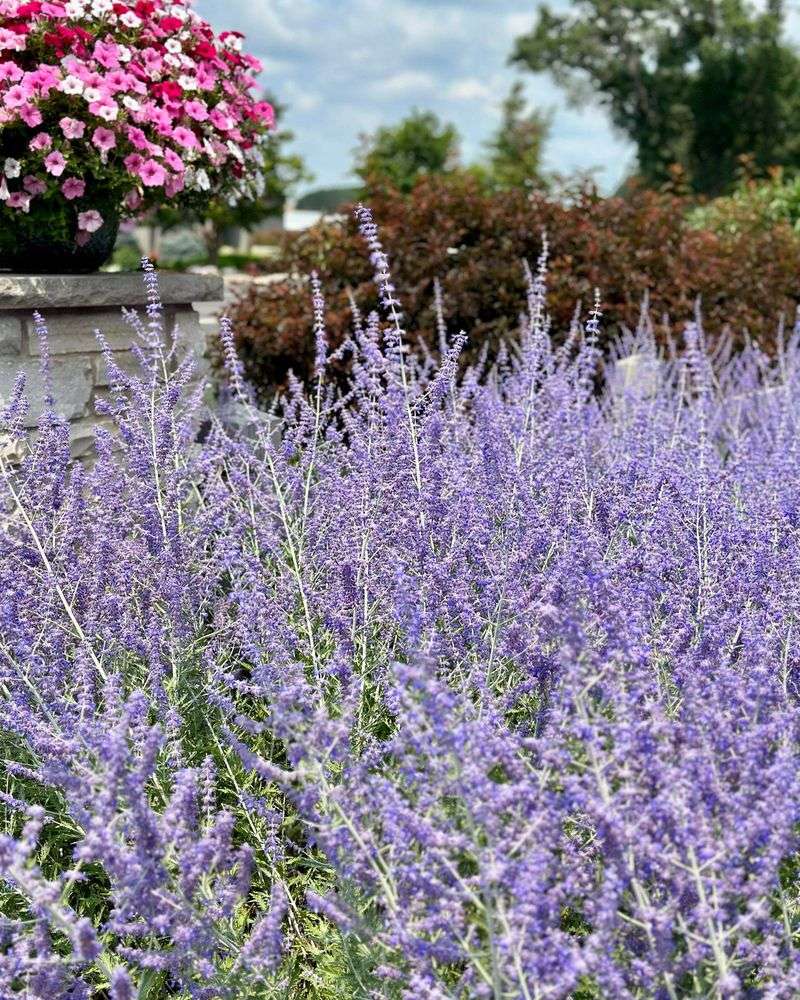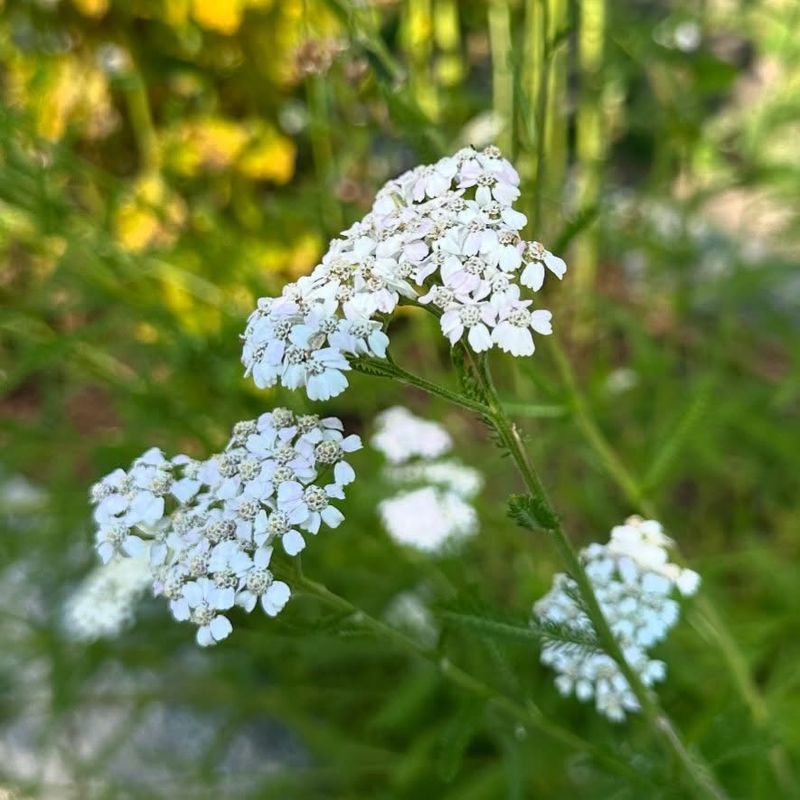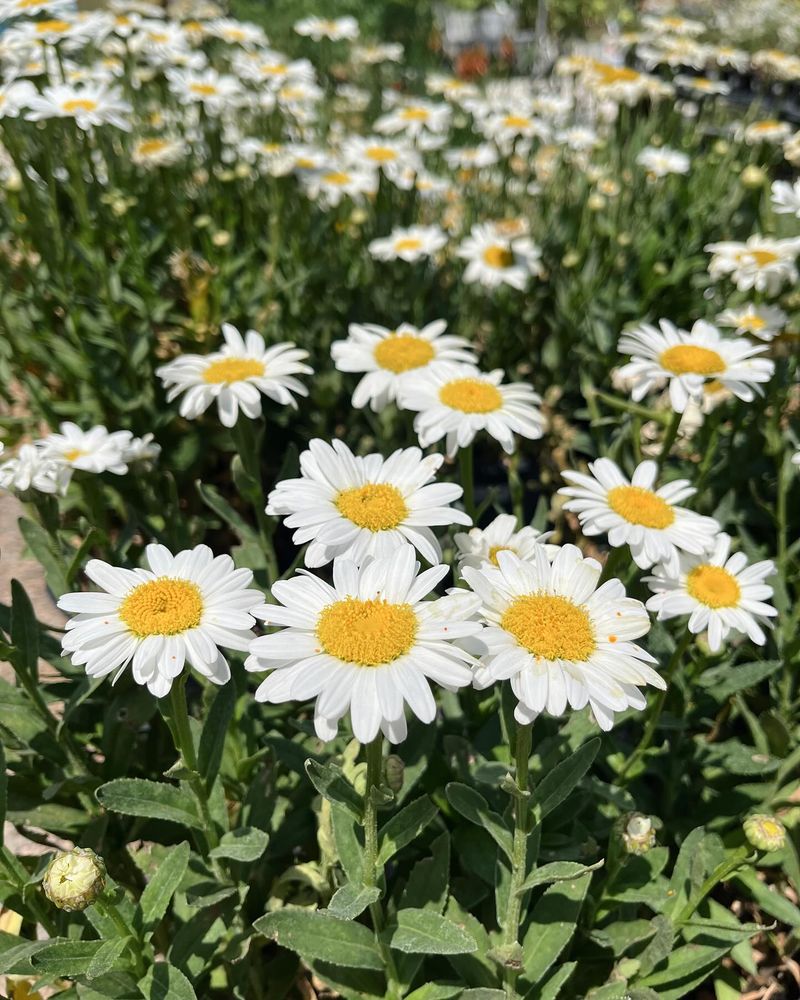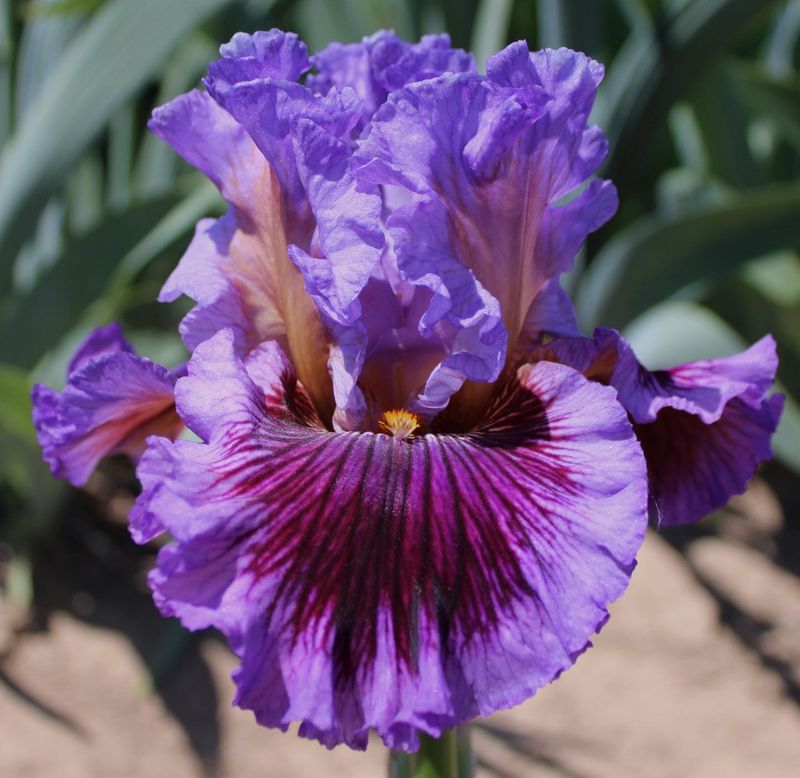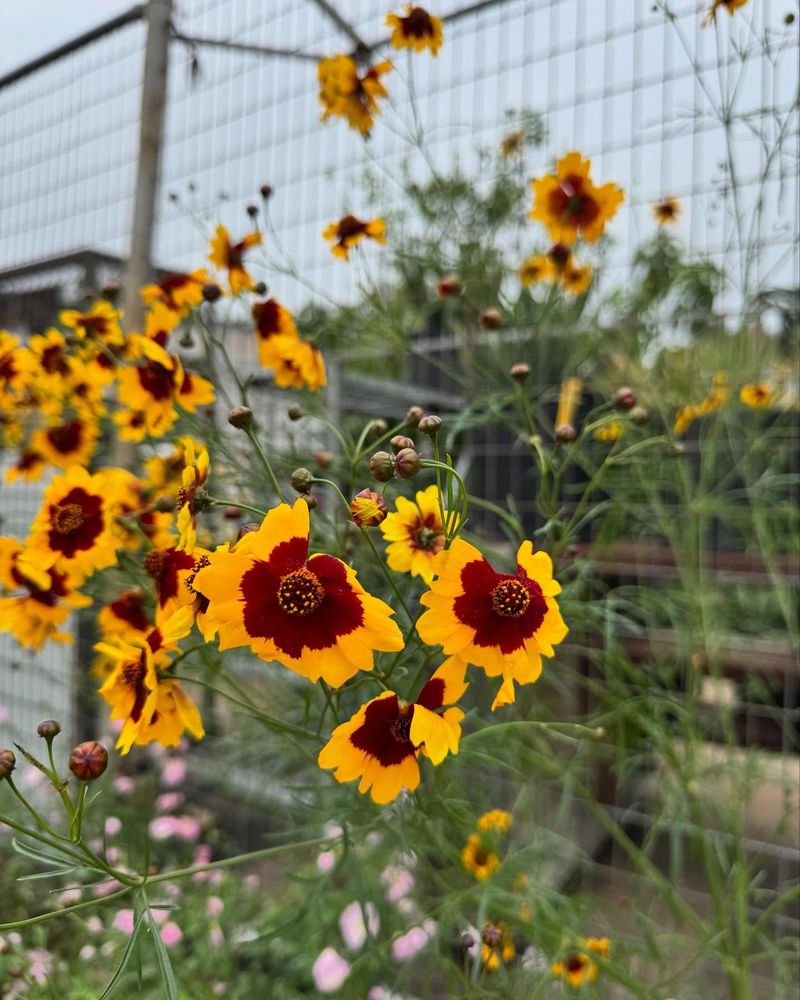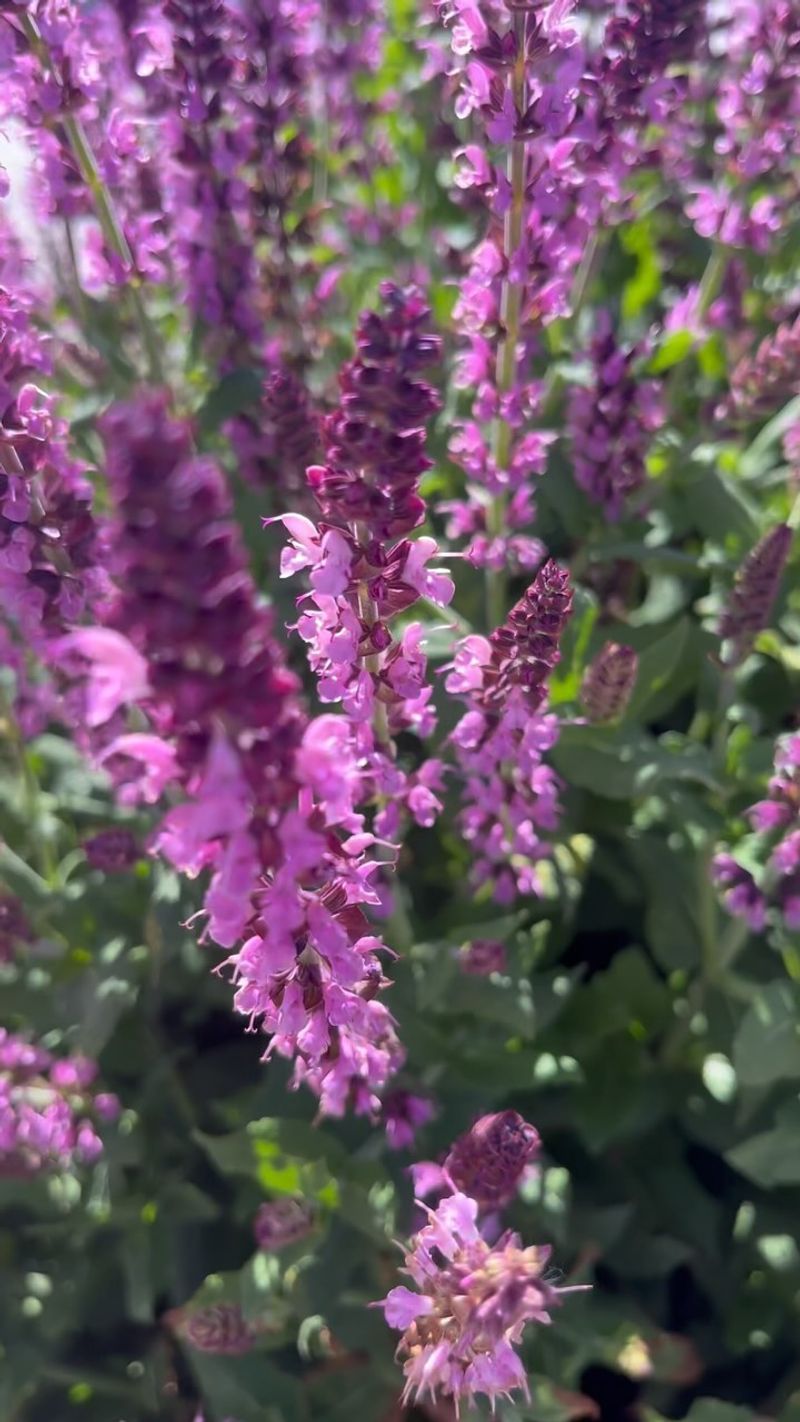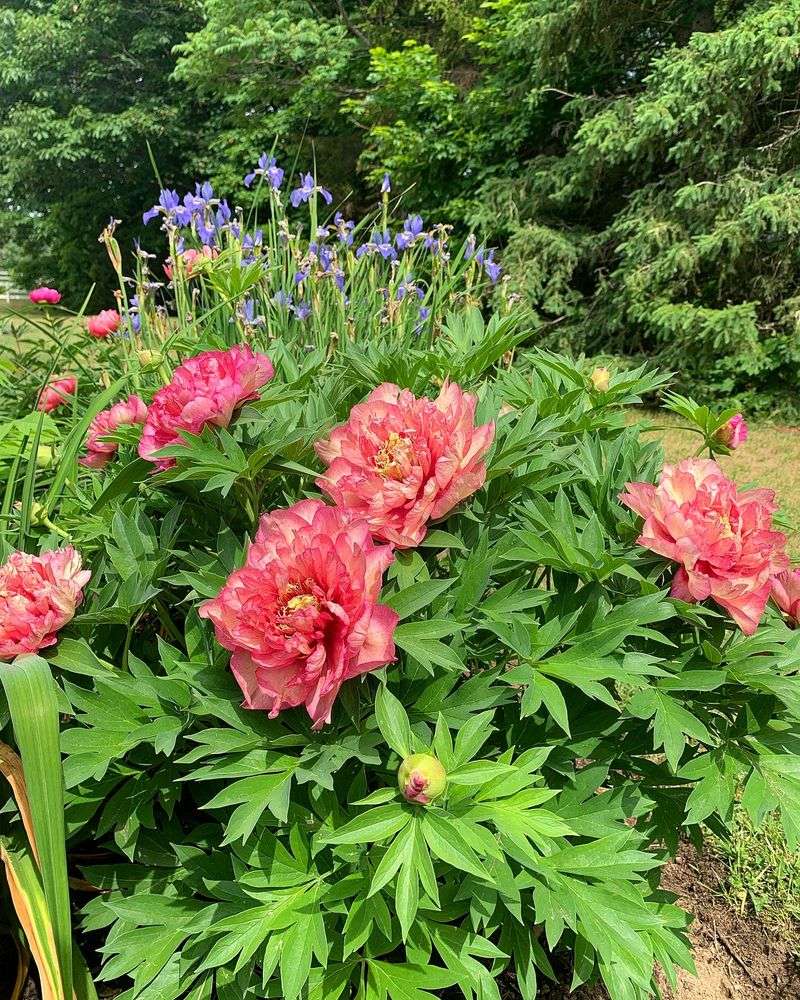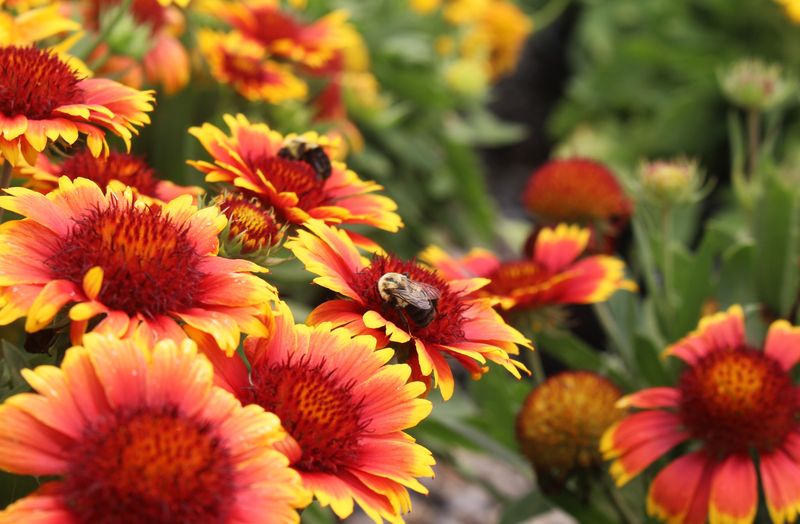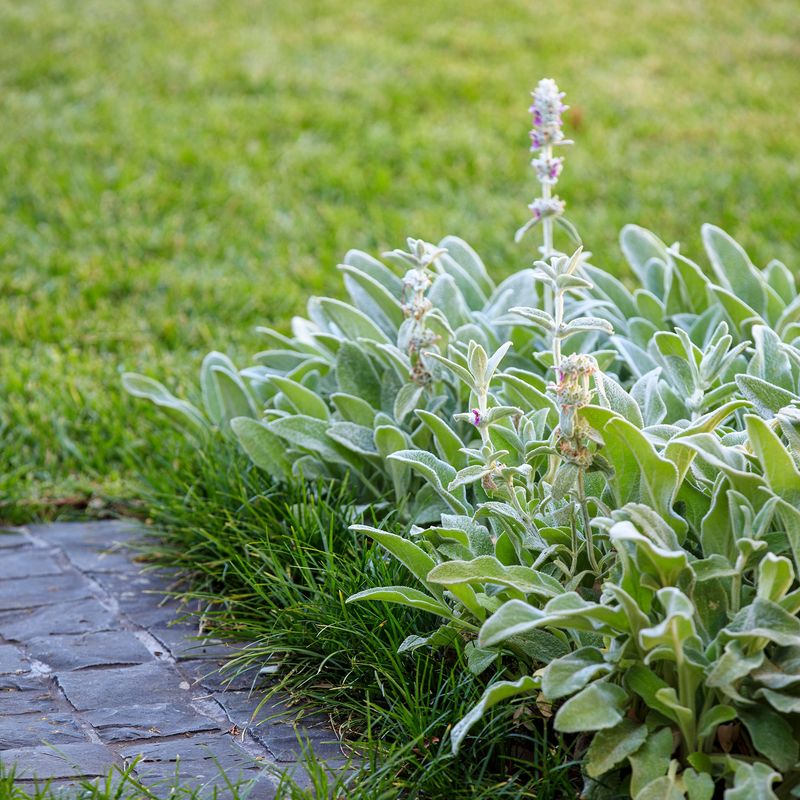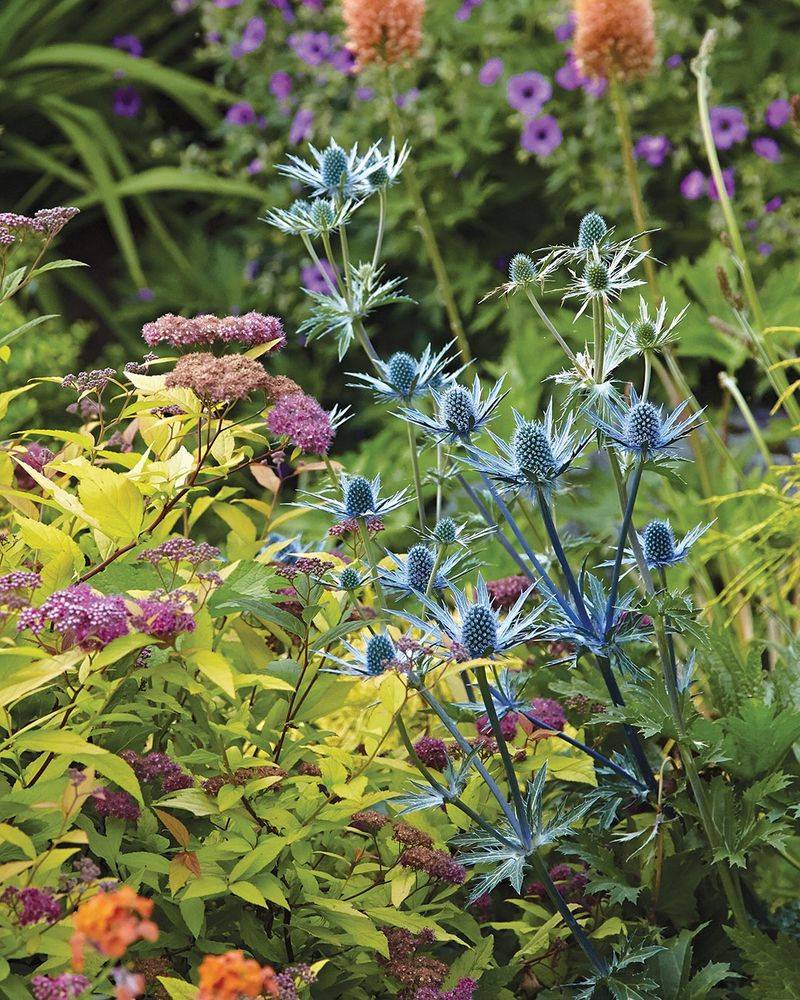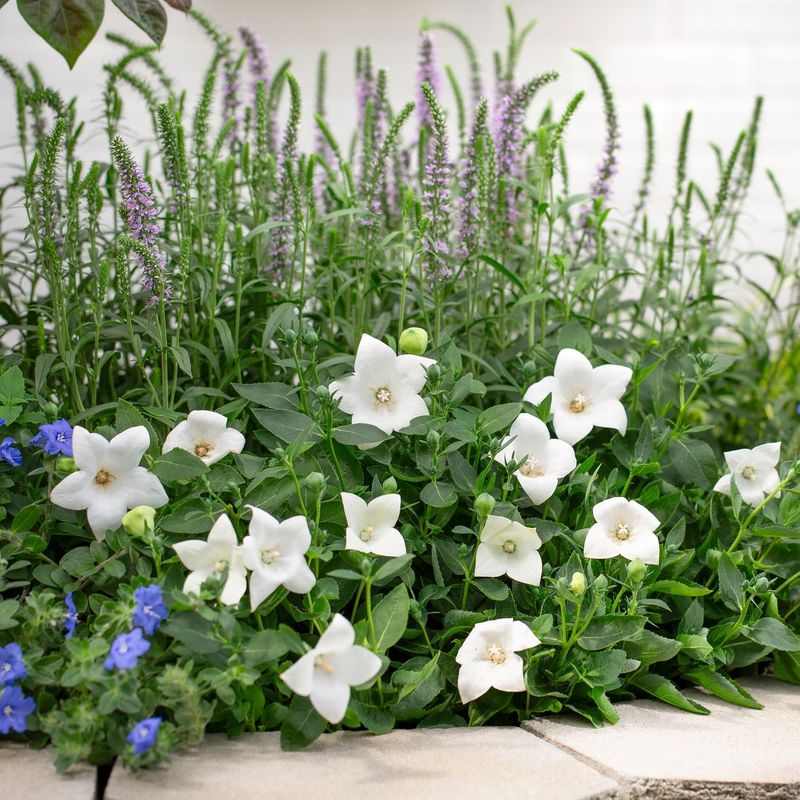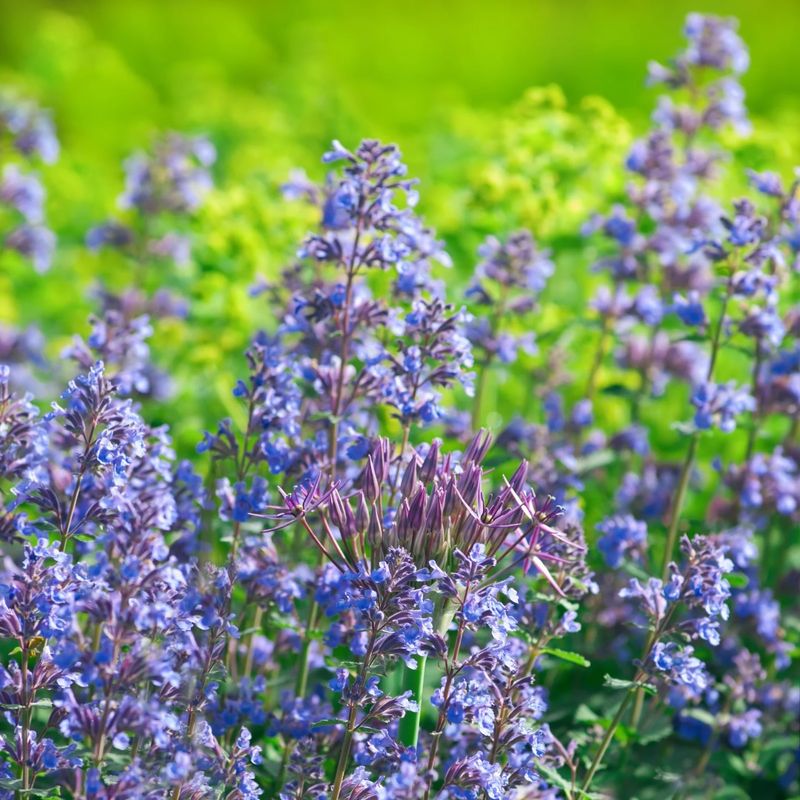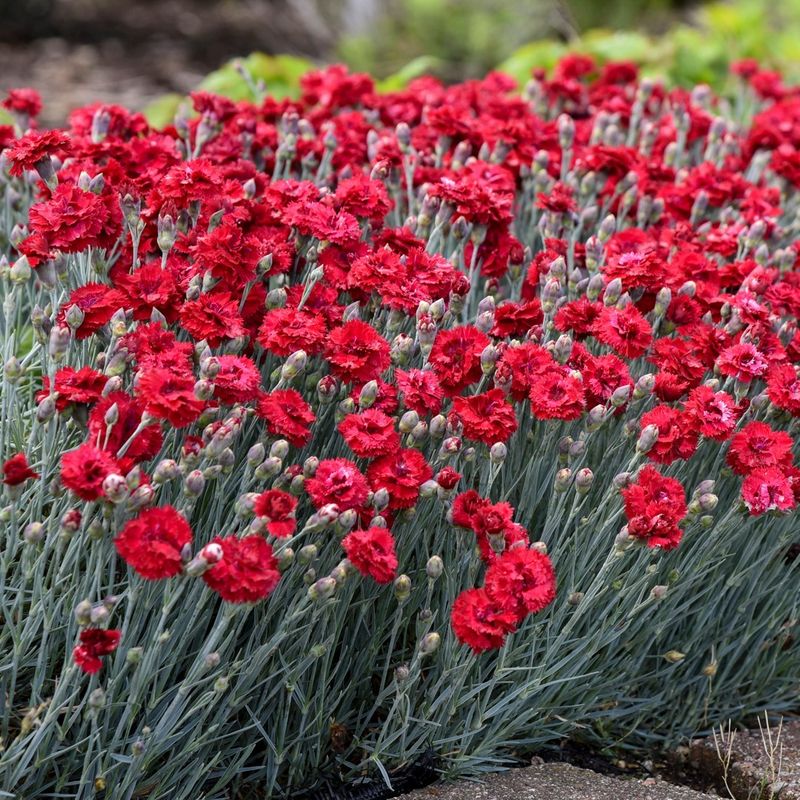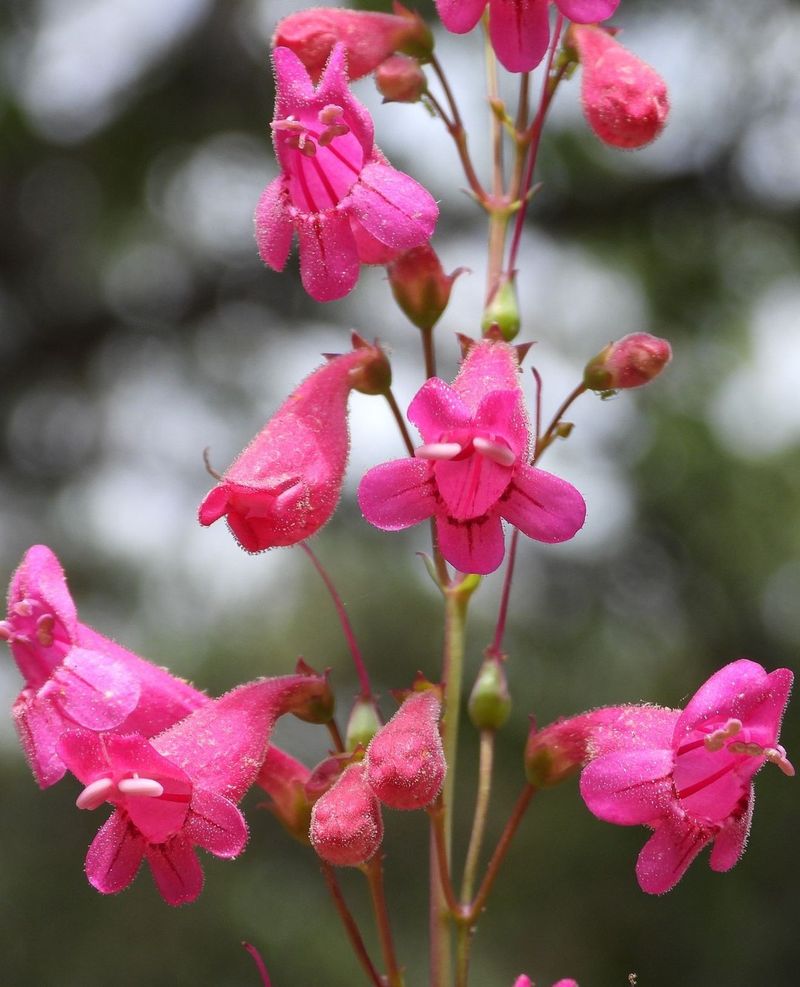Some perennials are total sun-lovers—they soak it up and shine their brightest in it. I’ve learned the hard way that planting them in shady corners is just asking for disappointment.
These 20 need full sun to look their best, and anything less leaves them struggling. If you’ve got a bright, sunny spot begging for color, these might be your garden’s new best friends.
Just don’t try to sneak them into the shade—they’ll sulk, and you’ll regret it.
1. Lavender
Most gardeners don’t realize that lavender actually hails from the Mediterranean, which explains its thirst for sunshine. Without enough rays, these fragrant beauties will stretch awkwardly and produce fewer of those iconic purple blooms we all love.
You’ll get the best results by planting lavender in the sunniest, driest spot in your garden. The plant’s silvery foliage and heavenly scent make it worth the effort, while its drought tolerance means you won’t need to water it much once established. Bees and butterflies can’t resist it either!
2. Black-Eyed Susan
These cheerful golden flowers bring a splash of sunshine to any garden, but they’ll sulk dramatically if planted in shade. Their daisy-like blooms with distinctive dark centers need those sun rays to power their impressive summer-long flowering display.
Many gardeners are surprised by how quickly Black-Eyed Susans can spread when happy, forming impressive drifts of color. They’re native to North American prairies, which explains their sun-loving ways and drought tolerance. Butterflies flock to these easy-care perennials, making them excellent choices for wildlife gardens and natural meadow plantings.
3. Coneflower
Don’t be fooled by the coneflower’s delicate appearance – these prairie natives are tough as nails when given full sun. Their distinctive raised centers surrounded by drooping petals create an architectural presence that shady spots simply can’t bring out.
The purple coneflower (Echinacea purpurea) might be the most famous, but newer varieties come in sunset hues from fiery orange to coral pink. Birds go crazy for their seedheads in fall and winter, providing natural garden entertainment. These medicinal plants aren’t just pretty – they’ve been used for centuries to boost immunity and fight colds.
4. Russian Sage
The cloud-like appearance of Russian sage in full bloom can stop traffic, but only if you give it the blazing sun it craves. Those silvery stems and tiny lavender-blue flowers need maximum light to develop their signature airy structure and intense color.
Despite its delicate look, Russian sage laughs at drought and poor soil once established. Its aromatic foliage naturally repels deer and rabbits, making it perfect for problem areas. The plant’s long bloom time from midsummer through fall provides reliable color when many other perennials have finished their show.
5. Yarrow
You might think yarrow’s flat-topped flower clusters would appreciate some afternoon shade, but this tough-as-nails perennial actually flops over without all-day sun. Ancient herb gardens always featured yarrow for its medicinal properties and ability to thrive in harsh conditions.
Modern varieties offer colors beyond the traditional white – look for yellows, pinks, and even deep reds. The ferny, aromatic foliage looks great even when the plant isn’t blooming. Yarrow makes an excellent cut flower, both fresh and dried, and its strong stems rarely need staking even in windy gardens.
6. Sedum
The fleshy leaves and star-shaped flowers of sedum tell you everything about its sun requirements – this succulent perennial stores water precisely because it evolved in sunny, dry conditions. When grown in shade, sedum stretches awkwardly and loses its compact charm.
Fall-blooming varieties like ‘Autumn Joy’ provide crucial late-season nectar for butterflies and bees. Their seed heads persist through winter, adding structural interest to the garden during the coldest months. Low-growing sedum varieties make excellent ground covers for sunny slopes where other plants struggle to survive.
7. Shasta Daisy
Nothing says summer quite like classic white daisies, but Shasta daisies develop weak stems and fewer blooms when they don’t get enough sunshine. Their pristine white petals surrounding golden centers need those rays to achieve their picture-perfect form.
Many gardeners don’t realize that Shasta daisies are actually human-created hybrids, developed by Luther Burbank after 17 years of plant breeding. They make excellent cut flowers, lasting over a week in arrangements. Deadheading spent blooms encourages these sun-lovers to produce multiple flowering cycles throughout summer.
8. Bearded Iris
The regal blooms of bearded iris showcase some of gardening’s most exotic colors, but they’ll only reach their full potential with abundant sunshine. Their sword-like foliage and thick rhizomes actually need sun exposure to prevent rot and disease issues.
Unlike many perennials, bearded iris prefer their rhizomes to bake in the sun, sitting right at the soil surface rather than buried deeply. The “beard” that gives them their name is actually a fuzzy patch on the falls (downward petals) that guides pollinators to the nectar. With proper division every few years, these sun-lovers will reward you with decades of springtime blooms.
9. Coreopsis
The daisy-like flowers of coreopsis bring months of cheerful color, but they become leggy and produce fewer blooms without full sun exposure. Their common name “tickseed” comes from the seed’s resemblance to ticks – though thankfully these beneficial plants have nothing to do with the actual pests!
Modern breeding has expanded the color range beyond traditional yellows to include pinks, reds, and bicolors. Coreopsis self-seeds readily in happy garden conditions, creating natural drifts over time. The plants’ fine-textured foliage provides an excellent contrast to broader-leaved garden companions.
10. Salvia
The spiky flower wands of perennial salvia create vertical interest in the garden, but they’ll only reach their full height and bloom potential in sunny spots. Their Mediterranean origins explain why these aromatic plants absolutely require well-drained soil and plenty of sunshine.
Hummingbirds go crazy for salvia’s tubular flowers, making these plants must-haves for wildlife gardens. Many varieties rebloom throughout summer if promptly deadheaded after their first flush. The aromatic foliage of most salvias naturally repels deer and rabbits, solving a common garden problem while adding beauty.
11. Peony
Those massive, fragrant peony blooms that grace early summer gardens are the result of plenty of sunshine – not just during flowering but all season long. Without adequate sun, peonies produce fewer flowers and may develop weak stems that can’t support their famously large blooms.
What many gardeners don’t know is that peonies can live for over 100 years when properly sited in full sun. Their flower buds are covered in a sticky substance that attracts ants, which help the blooms open (contrary to popular belief, the ants aren’t harmful). Once established, these long-lived perennials resent being moved, so choose their sunny spot wisely!
12. Blanket Flower
The fiery red and yellow blooms of blanket flower (Gaillardia) bring the colors of a desert sunset to your garden, but only if they receive hot, direct sun all day long. Native to American prairies, these tough plants evolved to thrive in challenging conditions that would wilt other perennials.
Despite their delicate appearance, blanket flowers are incredibly drought-tolerant once established. Their daisy-like blooms continue from early summer until frost if deadheaded regularly. The common name comes from Native American blankets that featured similar bold patterns and colors.
13. Lamb’s Ear
The velvety, silver-gray foliage of lamb’s ear feels just like its namesake animal’s ears, but this tactile quality only develops fully in bright sunshine. When grown in shade, the leaves lose their distinctive fuzzy texture and become more green than silver.
Kids especially love touching this plant’s soft leaves, making it perfect for sensory gardens. While lamb’s ear does produce purple flower spikes, many gardeners grow it primarily for its unique foliage. The plant’s drought tolerance comes from those fuzzy leaves, which reflect sunlight and conserve moisture – nature’s perfect adaptation for sunny spots.
14. Sea Holly
The otherworldly blue flowers and stems of sea holly create a striking architectural presence, but they need maximum sunshine to develop their intense metallic coloration. Even the spiny, silver-veined leaves require full sun to achieve their distinctive patterning.
Despite the name, sea holly isn’t related to true hollies at all but belongs to the Eryngium genus. Their unusual texture and color make them standouts in flower arrangements, both fresh and dried. These drought-tolerant plants have deep taproots that help them survive in poor soil where many other perennials would fail.
15. Artemisia
The silvery foliage of artemisia varieties like ‘Silver Mound’ and ‘Powis Castle’ provides essential contrast in perennial gardens, but that signature color only develops with abundant sunshine. In shade, the leaves turn more green than silver, losing their distinctive moonlit glow.
Many gardeners don’t realize that artemisia is related to culinary herbs like tarragon and wormwood. The plant’s highly aromatic foliage naturally repels many garden pests. Most varieties are grown primarily for their foliage rather than flowers, providing reliable structure and color throughout the growing season.
16. Balloon Flower
The charming buds of balloon flower puff up like tiny balloons before popping open into star-shaped blooms, but this show is much less impressive without full sun. Their common name comes from the way the unopened flower buds swell up before bursting open.
Despite their delicate appearance, balloon flowers are surprisingly long-lived perennials when properly sited in sunny spots. The most common variety produces true-blue flowers – a rare color in the garden world. Unlike many perennials, balloon flowers develop deep taproots and don’t appreciate being divided or moved once established.
17. Liatris
The bottle-brush blooms of liatris (gayfeather) create vertical drama in the garden, but those impressive flower spikes won’t reach their full height without adequate sunshine. Unlike most flowers that bloom from the bottom up, liatris blooms from the top down, creating a unique flowering pattern.
Native to North American prairies, these tough plants evolved to handle harsh conditions including drought and poor soil. Butterflies and bees can’t resist their nectar-rich purple flowers. The corms (underground storage structures) multiply slowly over time, creating increasingly impressive clumps in sunny garden spots.
18. Catmint
The cloud of lavender-blue flowers that catmint produces from late spring through summer requires full sun to achieve its impressive bloom quantity. Without enough light, the plants become floppy and produce fewer of those pollinator-friendly flowers.
Despite the name, catmint (Nepeta) isn’t the same as catnip, though cats may still show interest in it. The aromatic foliage naturally repels deer and rabbits while attracting beneficial insects. After the first heavy flush of blooms, cutting the plant back by half will trigger a second impressive flowering display in late summer.
19. Dianthus
The spicy fragrance and intricate petal patterns of dianthus (also called pinks) need full sun to develop properly. Their charming flowers with fringed petals and clove-like scent have been garden favorites for centuries, but they’ll disappoint in shady conditions.
Many gardeners don’t realize that carnations and Sweet William are both members of the dianthus family. Their blue-green foliage forms attractive mats that remain evergreen in milder climates. Most varieties bloom heavily in spring with repeat flushes throughout summer if promptly deadheaded after each flowering cycle.
20. Penstemon
The tubular, bell-shaped flowers of penstemon attract hummingbirds from across the garden, but they need plenty of sunshine to produce their impressive bloom spikes. Native to North American prairies and mountain meadows, these plants evolved to thrive in open, sunny habitats.
Modern breeding has expanded the color range to include everything from pure whites to deep purples and reds. Their semi-evergreen foliage provides winter interest in milder climates. Penstemon’s drought tolerance once established makes them excellent choices for water-wise gardens and challenging slopes.

